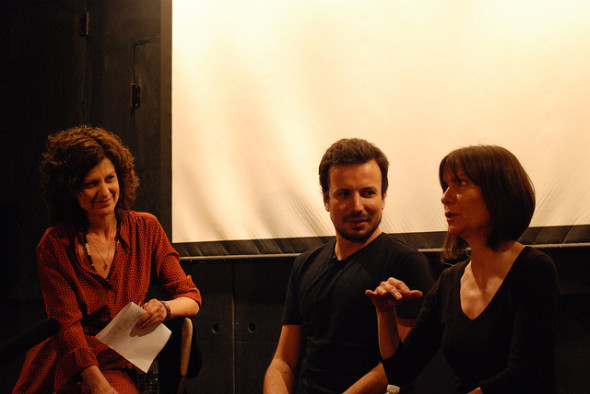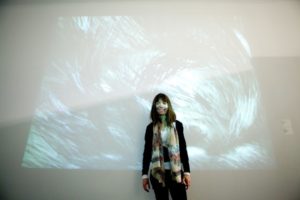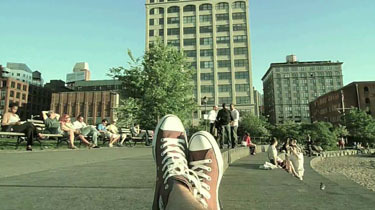On the 18th of June, as part of the Northside Film festival, Andre Valentim Almeida screened his film From New York with Love at UnionDocs. Joining him in the post-screening Q&A were photographer Rita Barros, and one of the film’s protagonists Anita Pantin.
Having recently moved to New York from Europe, I found I could easily relate to Almeida’s personal essay film. Delivered with irony and self-consciousness, the film is a witty exploration of his own cultural identity in relation to that of the US. Fluctuating between images of Portugal and the US, Almeida makes an attempt at comparison that, through the use of black and white footage and the incorporating of broader theoretical quotations, becomes a search for the universal, a uniting sense of humanity.
The film revolves around an obsession with the idea of being a tourist, something Andre is very aware of, and is reflected in his choice of camera. In the post-screening discussion, one of his friends and subjects of the film, Anita Pantin described his small Panasonic LX3 as “wonderful”, as it meant she saw him as a tourist with a camera, “in the way that everybody carries cameras these days”, instead of an imposing artist studying her for his creation. His choice of camera thus induced trust in his subjects, and produced an intimacy in his images.
However, after using DSLRs in his most recent film, he found this same “tourist-effect” to have backfired, as it meant his subjects did not respect him as an artist. Early on in the conversation he claimed to like the fact that his film is a film anybody could make, as everybody has their own images and responses to a certain moment, place or country.
But his comment about DSLRs problematizes this idea. In an age where everybody has the technology to be a photographer and filmmaker, how do we discern and pay respect to the true filmmakers? How do we step away from our own manic, attention-seeking need for documentation and self-invention and transform the solely personal to the universal in a way that becomes interesting to all? Almeida also mentioned the perplexity he has experienced at every screening of this film. He is confused about the public interest in this personal story, which is equally painful for him to discuss each time. Herein lies the difference. His portrayal is not attention-seeking, and as host Rita Barros noted: “a work of art is personal. If it’s not personal, it’s just not there”.
Pantin also rightly addressed the fact that the quality of his shots is not down to luck and coincidence, but due to his talent and eye, which he humbly denies.
It is Almeida’s talented assemblage that makes this the work of an artist, not simply that of a tourist. Just as he modestly shies away from the gaze and questions of the audience, his tentative and intimate approach to his subjects shapes him as a specific type of tourist with a laudable sensitivity to his surroundings. This is not a pretentious or assertive self-exploration, but a confrontation with the “other” that is not only America, but also himself. Almeida is as critical of himself as he is of his surroundings, and for me, that’s what really hits home. I hope that I too will become a similar kind of tourist.








